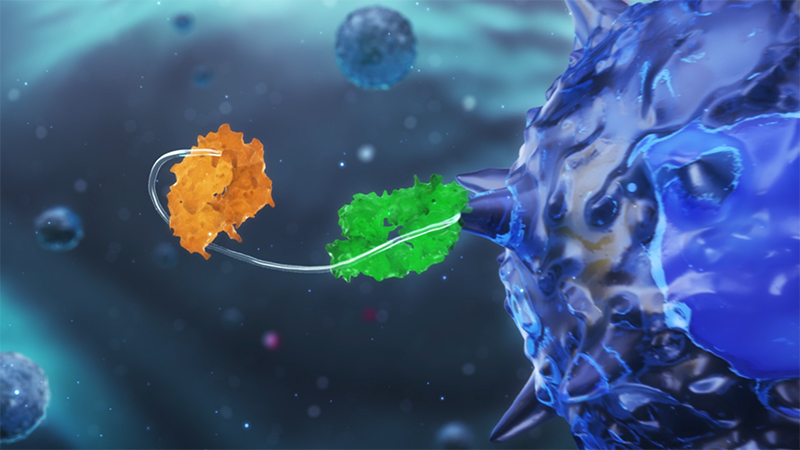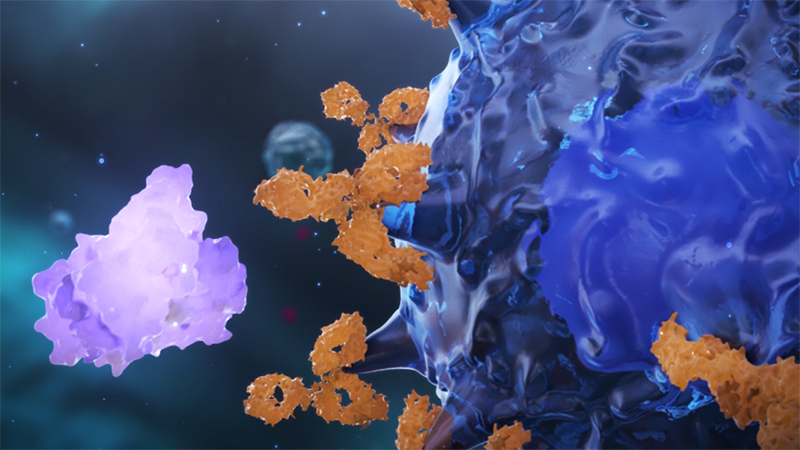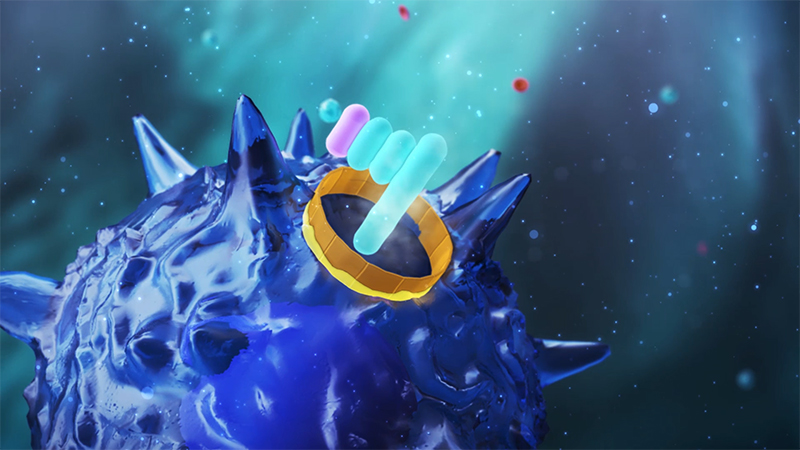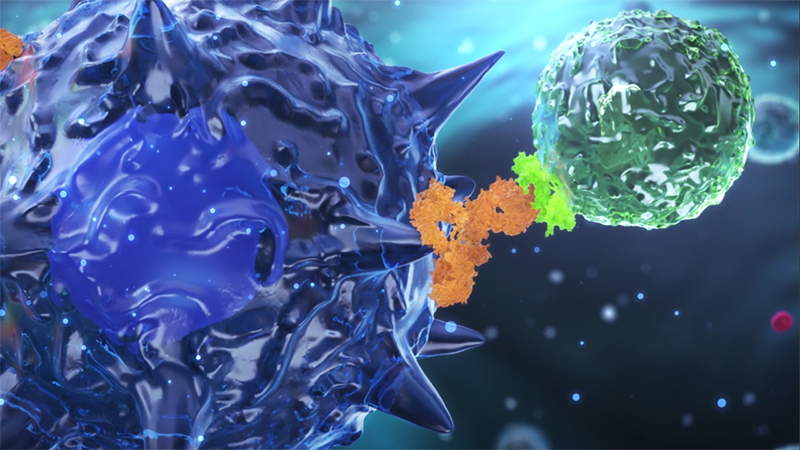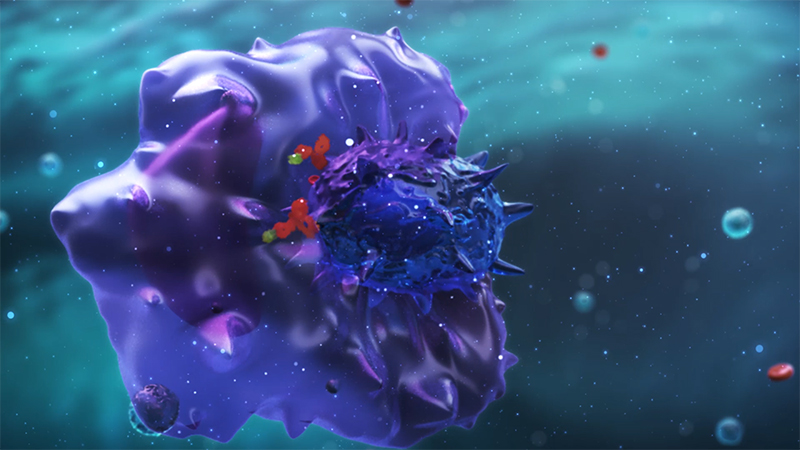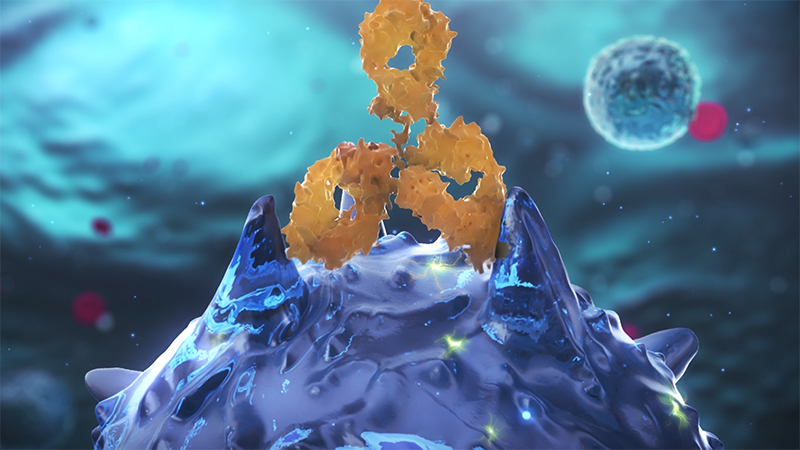Mechanisms of therapeutic antibodies
Therapeutic antibodies fight disease in a variety of ways. In addition to drugs that use the functions inherent in our body, that is, neutralizing activity, complement-dependent cytotoxicity (CDC), antibody-dependent cellular cytotoxicity (ADCC), antibody-dependent cell-mediated phagocytosis (ADCP) and agonist activity, with the advances in biotechnology, drugs like antibody-drug conjugates (ADCs) drugs and bispecific antibodies drugs are also attracting attention.
ADC (Antibody Drug Conjugate)
ADC is a hybrid drug in which a monoclonal antibody and a small molecular drug that has cytotoxic activity are bound via an appropriate linker.
The ADC binds to the antigen and are internalized into the target cell. After that, the small molecule drug in the ADC then exerts its action and fights off the target cell.
Bispecific antibody (T cell engager)
Conventionally, one monoclonal antibody can only bind to one epitope or antigen, whereas one bispecific antibody recognizes two different epitopes or antigens. In addition, by changing the number, position, and connection of the variable region, it can be designed into various forms, including the size of the molecular weight. Its greatest uniqueness is, by combining specificities, it can exert completely new functions.
For example, a bispecific antibody that recognizes antigens of T cells and cancers is called a bispecific T cell engager, and it is reported that the cytotoxic activity of T cells on cancer cells can be enhanced. In order to make the most of such a feature, it is important to design antibody molecules to bind specifically to their target antigens.
Kyowa Kirin has established its proprietary bispecific antibody technologies and is taking on the challenge of treating a variety of diseases.
Neutralizing activity
Antibodies bind to antigens such as pathogens and toxins which have invaded the body and inactivate the target's toxicity in order to neutralize it.
For example, growth factors stimulate the growth of some target cells such as cancer cells but when antibodies bind to receptors before they receive stimulation, the target cells starve to death.
Specific examples are molecular target drugs that block cancer growth signals and immune checkpoint inhibitors.
CDC (Complement Dependent Cytotoxicity)
When an antibody binds to an antigen in a target cell (cancer cell, virus, etc.), multiple serum proteins (complement) react and activate one after another. Then, a series of reactions occur on the cell surface, lysing the target cell.
ADCC (Antibody Dependent Cellular Cytotoxicity)
When an antibody binds to an antigen on the surface of a target cell, such as a cancer cell, the antibody attracts immune cells such as macrophages and NK cells to kill or damage the target cell by releasing cytotoxic molecules.
ADCP (Antibody Dependent Cell mediated Phagocytosis)
When a foreign substance (pathogen) invades the body, the antibody paired to the antigen on the surface of the pathogen is produced, and macrophages that engulf and digest the foreign substance and neutrophils a type of white blood cells that engulf bacteria and protect the body are activated. They fight against bacteria, viruses, and cancer cells that cause various diseases.
Agonist activity
The function of antibodies is to bind to target molecules on the cell surface and activate the signaling mechanism. As a result, it causes changes in the state of the cells or cell death.


